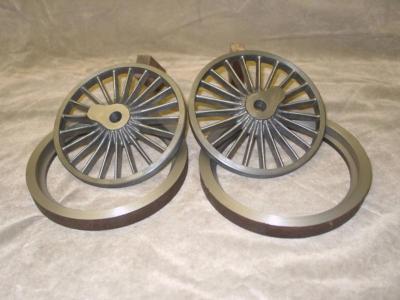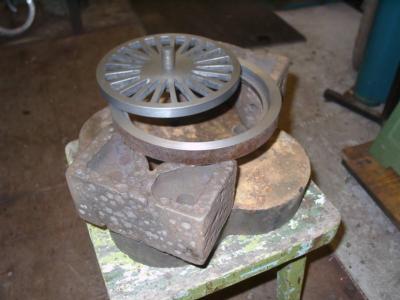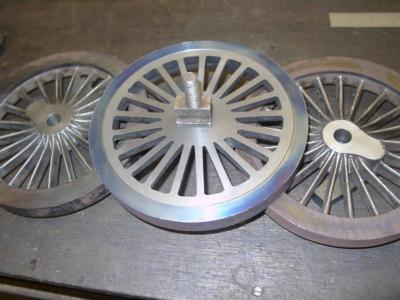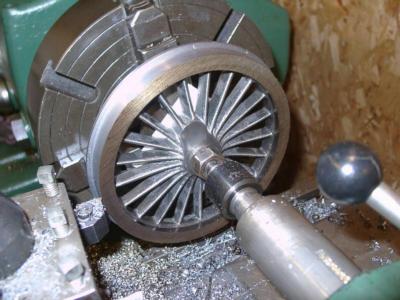| The steel tyres are machined from solid drawn carbon steel tube. (Available in the north west, at a price, from TI tubes of Bromley Cross, 01204 354911) Machine the diameter one thou per inch less than wheel casting diameter (For example here where the wheel diameter is 7" tyres machined -7 tho.) Note the shoulder left on front face of the ring, this helps to retain the tyre in position and gives a more effective hold on the wheel centre. It also strengthens the wheel face against damage in possible derailments etc. |
 |
 |
Wheel casting machined and set up ready for the tyre to be heat treated. This expands the tyre enabling the wheel hub to be fitted. The assembly is allowed to cool naturally and the tyre ring shrinks thus fixing the assembly together. Note the set up for heating the tyre in position and the bolt fitted in centre of wheel casting to allow easy handling and transfer of unit in direct line with the tyre when the correct temperature is reached. It is important that the tyre is heated evenly and that the temperature is raised to no more than black heat turning blue, approximately 475F to 535F. If the tyre is heated to a temperature any higher than required the process can have a reverse effect, therefore the tyre when expands it will stay at a larger diameter when cooling takes place. The use of inside callipers can be useful to determining the correct expansion before offering the wheel centre in place. |
| This view shows the ring shrunk onto the wheel and left to cool down slowly without any assistance. Note the blue colour of the tyre! |
 |
 |
The wheel can now be set up in the lathe for the outside tyre to be machined to the desired profile. Note the small piece of newspaper clamped between the wheel and the mandrill, this prevents the work piece moving during the machining operation. Turning the profile is normal engineering practice i.e. slow speeds, fine feeds and plenty of coolant. The forces set up in machining the tyre will prove if the shrinking process has been successfully completed.
|
| This view shows front and back views of the finished process, clearly showing the tyres shrunk onto the wheel centres.
|
 |









